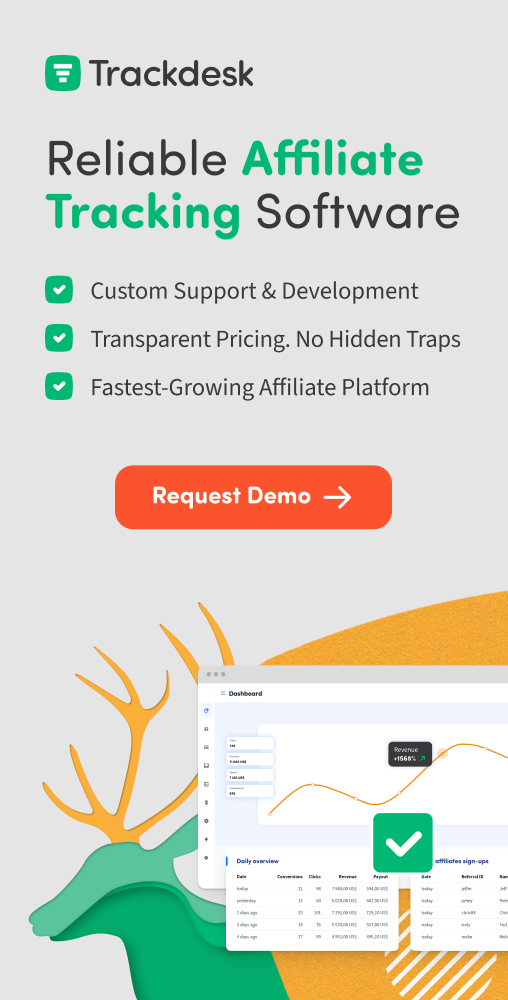
15 Best Affiliate Marketing Examples: What’s Working in 2025
Discover 15 powerful affiliate marketing examples that are crushing it in 2025. See what’s working for top brands like Shopify, SEMrush, and Amazon—and how to apply their strategies to grow your own program.
Creating an affiliate program is one of the highest ROI marketing strategies in the world.
Companies like Amazon, Shopify, and Skillshare have created empires on the backs of their affiliates—to the tune of millions of dollars in profit.
So what’s their secret?
I’ve personally generated thousands of sales for some of the companies on this list as an affiliate…
And in this article, I break down the most successful affiliate marketing examples, why they worked, and how you can borrow their strategies to explode your own program’s growth.
Let’s dive in.
Software & SaaS Affiliate Marketing Examples
Software as a service (SaaS) companies have dominated the market in recent years, largely due to low overhead and subscription models, which allow them to pay highly profitable affiliate commissions.
There’s a lot to learn from the way companies like Shopify and ConvertKit have leveraged affiliate marketing to create exponential growth.
Let’s break down how you can build a profitable SaaS affiliate program based on what’s worked for them.
1. Kit (Formerly ConvertKit)
Kit is an email marketing software with a generous affiliate program that helped them generate $38 million in annually recurring revenue in 2023.
What makes this affiliate marketing example stand out?
They offer a massive 50% commission on every referred customer for the first 12 months, plus continued recurring revenue for affiliates that send at least 10 customers.
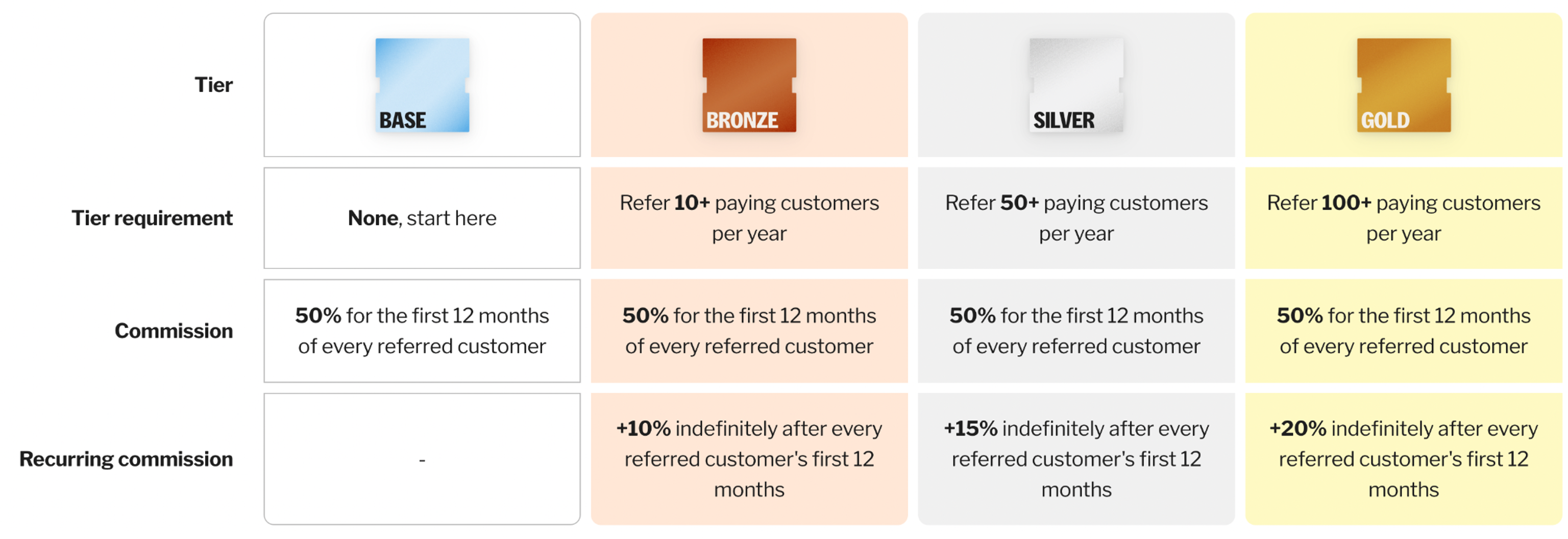
Offering generous commissions like this is one of the best strategies for finding (and keeping) high-quality affiliates who love promoting your brand.
2. Shopify
Shopify is truly a beast of a company, reporting a revenue of $2.81 billion in 2024.
They are a comprehensive commerce platform that enables businesses of all sizes to start, scale, market, and run their operations across various sales channels.
Their affiliate program offers affiliates a $150 fixed-price bounty for every referral that signs up for a full-price subscription. It’s not a recurring commission like Kit offers, but it does offer a higher upfront payment.

Their secret sauce is that they have an excellent product that people want to refer others to.
When I first started in affiliate marketing and e-commerce over 10 years ago, Shopify was a revolutionary product that made it easy to launch and grow your own e-commerce store. There was nothing like it at the time. The closest option was woocommerce, which had a lot of site speed issues and required much more technical knowledge.
Having a product that’s truly worth promoting is one of the keys to succeeding with your program.
3. Bluehost
Bluehost is a website hosting company and launched its affiliate marketing program in 2004, spending over a decade developing it into one of the best in the industry.
One of their affiliates even reported earning over $25,000 in one month.
Like Kit, Bluehost stands out as an affiliate marketing example for their extremely generous affiliate commission of $65 per sale—even if that sale is less than $65.
Yes, that means they lose money on individual sales from their affiliates. Bluehost web hosting starts at $2.95/mo; a $62.05 loss for Bluehost. So, how is Bluehost still making money from their affiliate program?
Because they deeply understand their customer lifetime value (LTV).
Over the life of a customer’s subscription, Bluehost will make more than $65 on average, so they can afford to pay commissions at a huge loss. LTV is an important affiliate marketing KPI to ensure you’re setting the best possible commissions and not losing money.
4. SEMrush
SEMrush is a comprehensive online marketing suite that provides tools for SEO, content marketing, competitor analysis, social media, and paid advertising.
Not only does Semrush offer a huge $200 commission for each sale, they also offer $10 for free trial signups and an extremely long 120-day cookie duration.
In other words—their program makes affiliate marketers drool.
There are a few things you can take away from this affiliate marketing example:
- Give generous commissions (this is a theme, if you couldn’t tell)
- Offer long cookie durations
- Make a product people enjoy using and want to share
5. Skool
Skool is a community platform designed for course creators and coaches to build online communities, host courses, and offer membership-based content, started by Sam Ovens and bought by Alex Hormozi—two of the most successful digital marketers of the modern world.

Their affiliate program offers a highly desirable 40% recurring commission on their flagship $99/mo product. That means affiliates earn $39.60 per month per referral—forever.
It doesn’t get much better than that in the affiliate world.
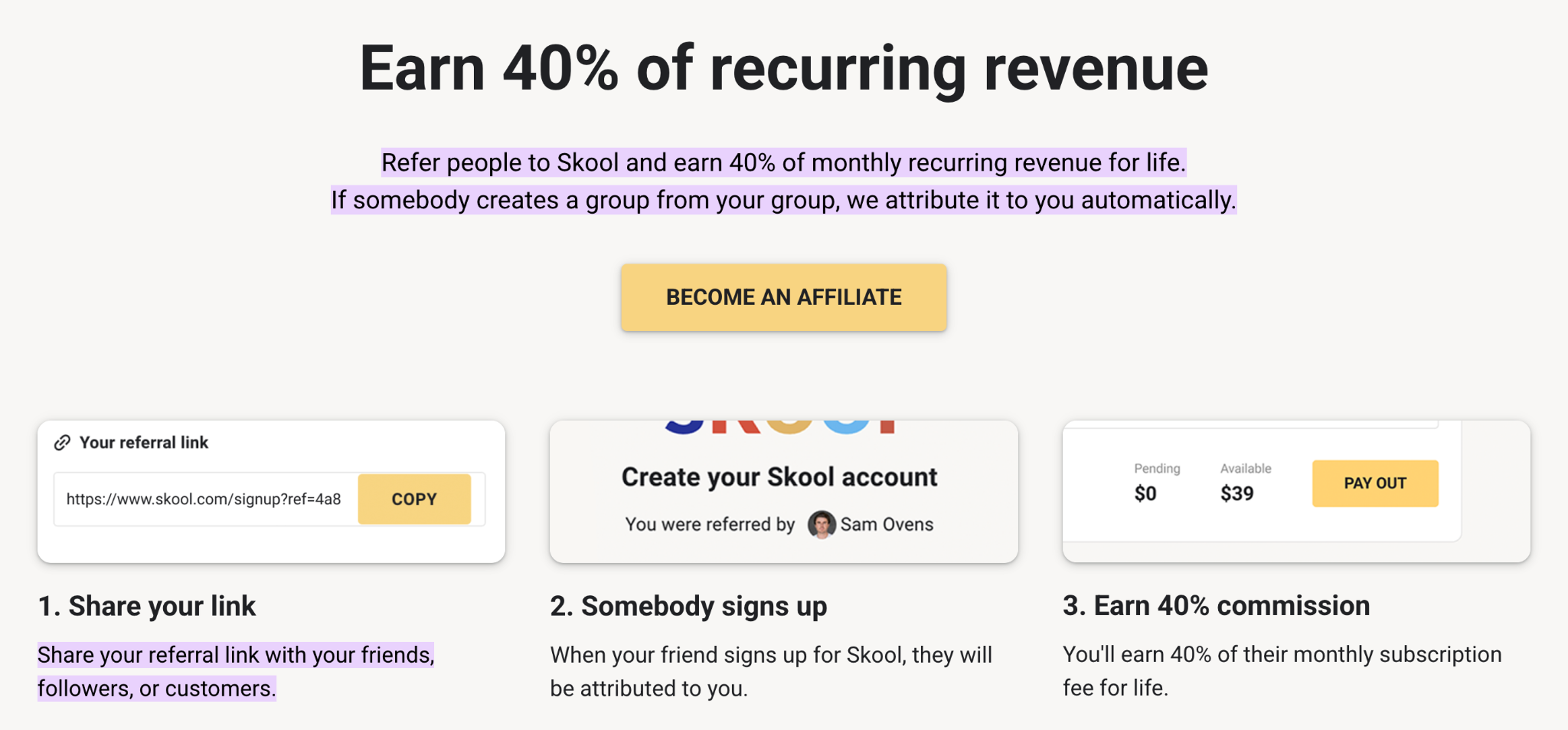
But Hormozi deeply understands the power of affiliate marketing, and he doesn’t stop there.
Skool further utilizes affiliate marketing to its users to grow their communities. So if you offer a community on Skool that costs $100/mo, you can offer up to 50% commissions to your members who refer other members.
The best part?
Skool makes a % of transaction fees. Which means they earn from you using their software AND from every one of your paying members. The more successful their users are, the more money they make.
They’re heavily incentivized to help their users succeed.
The takeaway: Be creative about your offerings. Think of ways you can incentivize your users to promote your product and make it a win-win for everyone involved. Make the whole pie bigger rather than just trying to keep a bigger slice for yourself.
E-commerce & Retail Affiliate Marketing Examples
E-commerce and online retail has exploded in recent years, thanks to massive adoption of platforms like the TikTok Shop and Instagram Shopping, mixed with the online shopping boom following the pandemic.
Let’s take a look at how to build a successful e-commerce affiliate program, based on what’s working now:
6. Amazon Associates
Perhaps the greatest example of successful affiliate marketing, the Amazon Associates program has been the go-to for new and experienced affiliate marketers for over a decade.
What made them so successful?
- Great customer service and experience. Amazon has always been known for extremely easy shopping, with fast and cheap shipping and easy returns.
- Offering nearly everything. You’d be hard-pressed to find something you can’t buy from Amazon. While most brands can’t match them, it’s good to think about how you can cover multiple categories for your affiliates.
- Extremely easy to apply and start promoting products. Signing up for the Amazon Associate’s program only takes a few minutes, and it’s very easy to create direct links to promote products right away. That’s why it’s important to choose the right affiliate software for your online store.
- Historically generous commissions. Certain products/categories offered up to 20% commissions, although Amazon has drastically lowered its commissions in recent years.
Keep in mind that while the Amazon Associates program is still massively successful, its success has dropped a lot since its peak. They used to offer longer cookie durations and higher commissions, but when online shopping boomed in 2020, they made massive cuts, and their affiliates weren’t very happy about it.
7. Etsy
Etsy is an online marketplace for unique and handcrafted goods. Their affiliate program is nothing special — they offer a 4% commission and a 30-day cookie duration.
However, what got Etsy a spot on this list as a good affiliate marketing example is their second option: The Creator Collective.
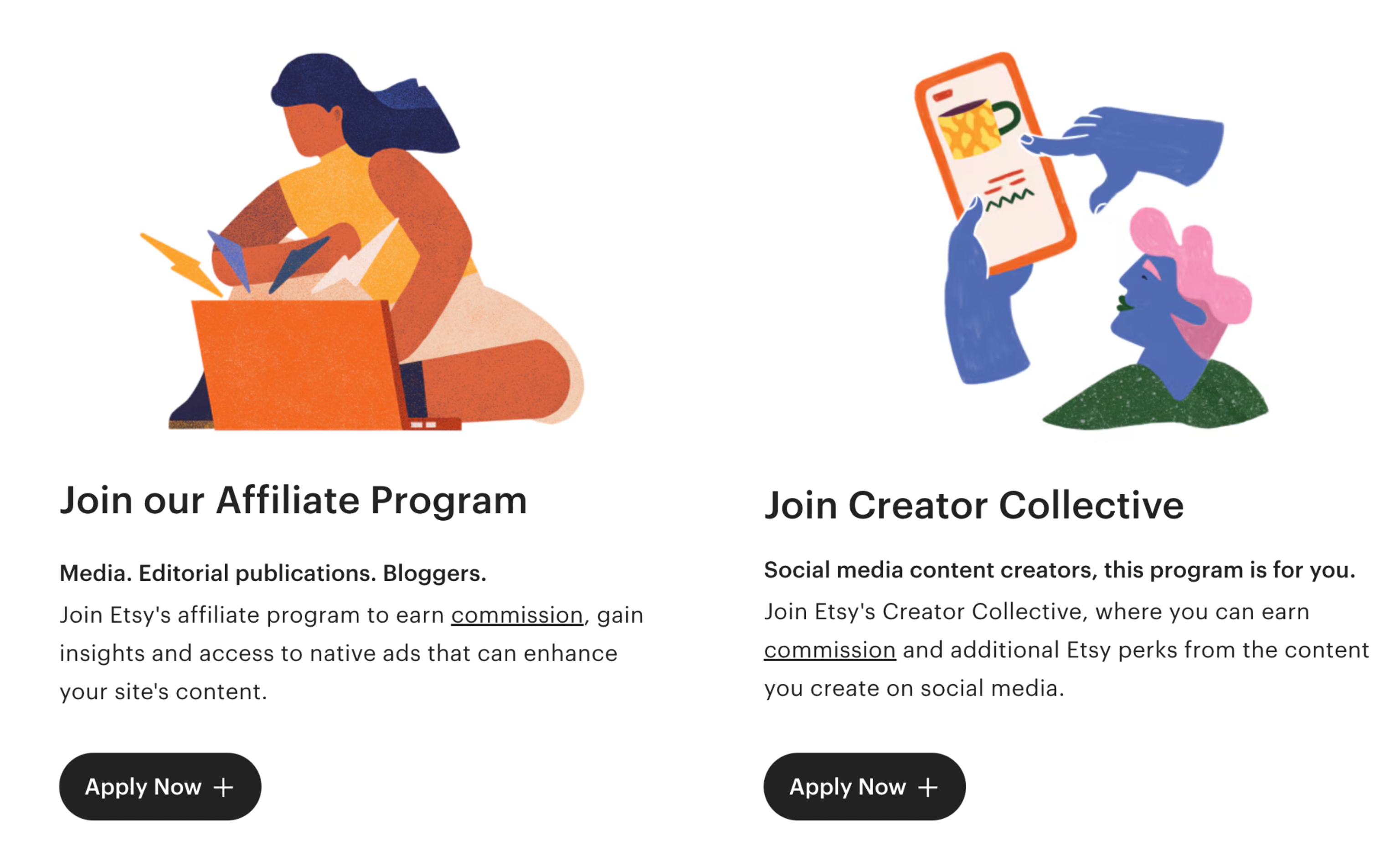
Their Creator Collective program is an affiliate program made specifically for social media content creators. It offers a much better 10% commission (which is high for retail products), and it encourages collaboration through the Etsy community of creators.
The thing Etsy does well is bringing creators together and encouraging them to help one another. Community can be a powerful motivator for affiliate marketers.
8. Ollie
I’m a dog lover, and I couldn’t talk about affiliate marketing examples without mentioning Ollie.
Ollie sells human grade dog food and healthy treats, and their affiliate program is worth checking out. They offer $60 for every paying customer their affiliates send.

But what stands out about Ollie is that they donate a portion of their profits to animal shelters and rescue groups.Getting involved with a non-profit is a great way to give your affiliate program a little edge; people love to support good causes, especially if it doesn’t cost them anything extra.
Subscription-Based Affiliate Programs
Subscription-based products and services have also become more popular, in large part thanks to the business world’s obsession with monthly recurring revenue (MRR). And they work great with affiliates.
If you offer some kind of subscription service, you’ll want to check out these affiliate marketing examples:
9. MasterClass
MasterClass is an online learning platform that offers video courses taught by industry leaders, celebrities, and experts. It has everything from mastering sex appeal to learning about history to art and design.
Their affiliate program offers a generous 25% commission; however, this is not recurring. It is only a one-time payout. If I were advising MasterClass, I would recommend they change this to a recurring commission—even if they lower the percentage. That would incentivize more affiliates to work with them and stay with them long-term.
What they do well, however, is offer a diverse range of education on lots of different topics. Because of this, they can have affiliates in nearly any niche and market to tons of different audiences.
10. Skillshare
Like MasterClass, Skillshare is an online learning platform with video course content. However, they offer an even better 40% commission (although it is capped at $67).
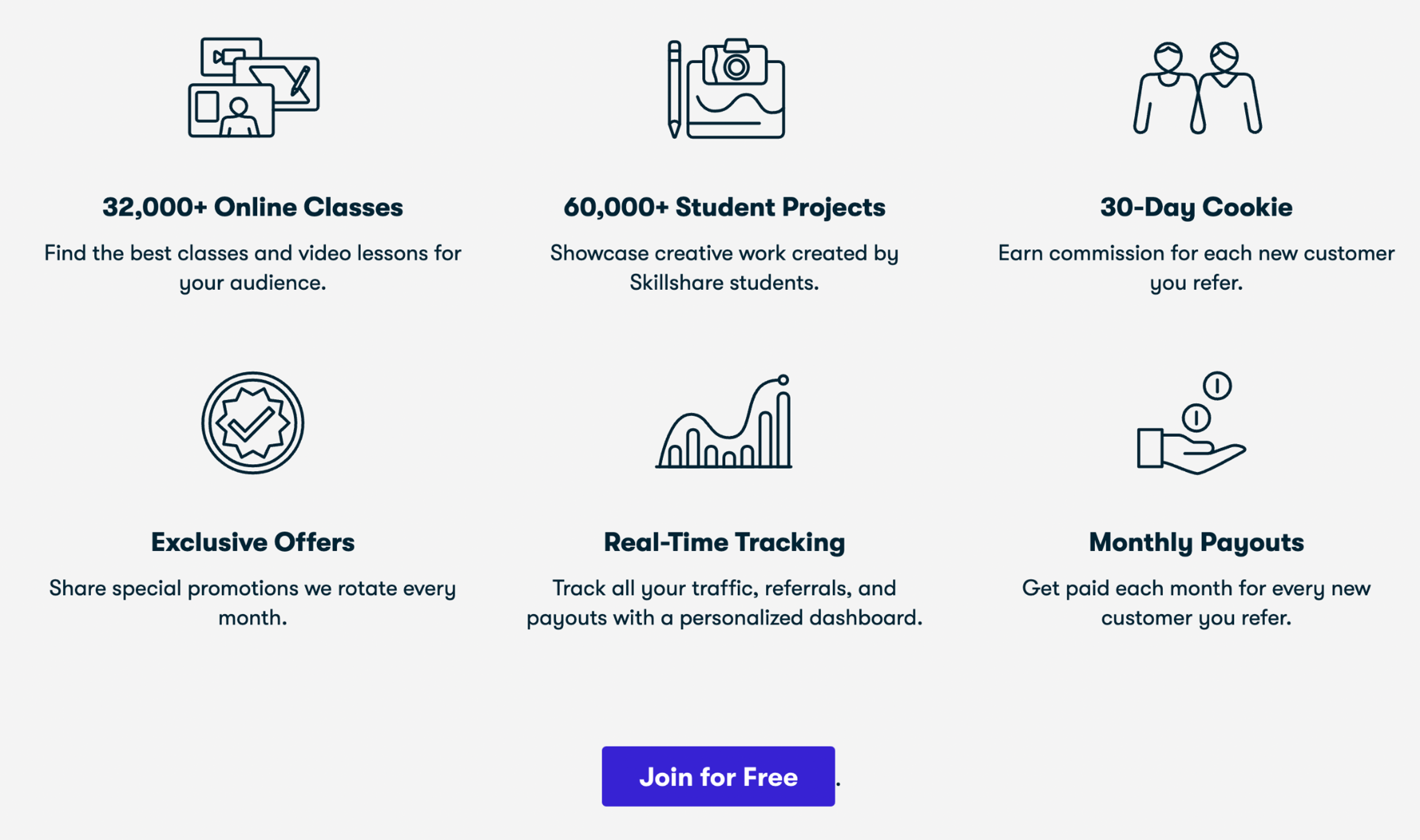
Their commission isn’t recurring, either. But what Skillshare does really well is tap into the creator economy and work closely with their top affiliates to tweak their landing pages and improve conversions. They are heavily invested in their affiliates—and you should be, too.
They also provide affiliates with pre-written ad copy, creatives, tracking links, and detailed performance dashboards (which you can get with Trackdesk, by the way).
11. HelloFresh
HelloFresh is one of the fastest-growing meal subscription services in the world—and they owe that, in large part, to their affiliate program.
Their program isn’t particularly impressive. They only payout $10 per sale and have a small 14-day cookie window. However, where HelloFresh shines, is in their hustle to find great affiliates.
They do a TON of direct outreach to influencers, bloggers, and creators of all kinds—and they have a special interest in targeting micro-influencers (those with less than 100,000 followers) who have highly engaged audiences, like YouTubers Katy Bentz and Pilates by Jess Pfit.
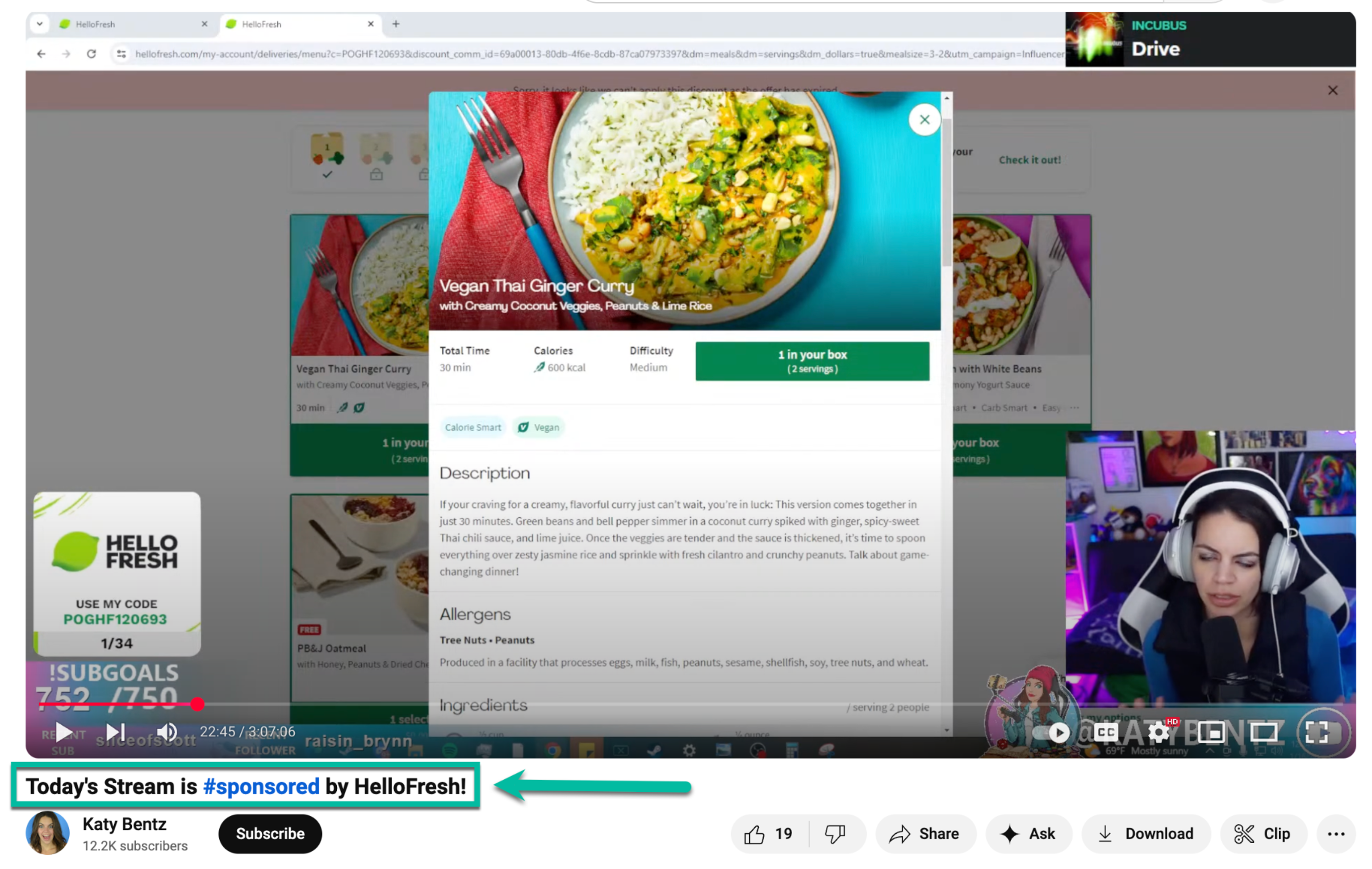
If you want your affiliate program to succeed, you should be on the lookout for creators and influencers with engaged audiences who need sponsorships and other monetization methods.
My friend Kelly is a great example of this—she’s a meditation and self-mastery coach with 135k followers on TikTok, but hasn’t been able to monetize her audience well (yet!).
Professional Services Affiliate Programs
Service-based businesses can utilize affiliate marketing, too. Services like Fiverr and LegalZoom have beautifully executed affiliate programs you can learn a lot from.
12. Fiverr
Fiverr is an online marketplace that connects freelancers with businesses seeking their services.
Their affiliate program helped them become the largest freelancer marketplace in the world, with a fantastic commission of up to 70%, plus 10% of everything that customer purchases in their first year.

I’m sure you see the trend here—the more attractive you make your affiliate program, the more high-quality affiliates you’ll attract, the more money you’ll make. It’s that simple.
13. LegalZoom
LegalZoom is an online legal technology company that provides DIY legal services and attorney referrals.
LegalZoom’s affiliate program is a textbook example of how to build a high-performing, mutually beneficial affiliate strategy. Here are some key takeaways:
- Look for affiliates whose audience is ready to buy. LegalZoom targets affiliates who create content with high purchase intent—like “how to form an LLC” or “best online legal services.” These are users already looking for solutions, and LegalZoom’s offerings are a natural fit.
- Make it worth your affiliates’ time. LegalZoom offers competitive commissions (often $60–$100+ per qualified lead). Keep payouts attractive and simple to understand. Consider paying per lead instead of just per sale if it makes sense for your funnel.
- Give affiliates what they need to succeed. LegalZoom provides creatives, product info, and promotional tips via networks like CJ Affiliate. This helps affiliates promote them more effectively and reduces friction.
Overall, aligning your offer with the right affiliates and the right audience is the biggest takeaway from this example. The better that alignment, the more successful your program will be.
Lead Gen Affiliate Marketing Examples
Last but not least, here are a few examples of affiliate lead generation. These companies use affiliate marketing to generate leads for other companies, also referred to as an affiliate network.
Fun fact: You can use Trackdesk to create your own affiliate network! But let’s get to these examples.
14. Credit Karma
Credit Karma is a personal finance company that offers free access to credit scores, credit reports, and identity monitoring, along with personalized recommendations for credit cards, loans, and insurance products.
They make money by earning commissions from financial institutions when users apply for and are approved for products (like credit cards or loans) recommended by their platform, essentially acting as a broker for these financial products.
Credit Karma’s affiliate program gives you a commission when someone clicks your link and signs up as a member.
While the user doesn’t pay anything, Credit Karma earns money by referring that user to financial institutions—like credit card companies, loan providers, or banks—who pay Credit Karma when the user takes an action (e.g. applies for a credit card, opens an account, etc.).

Your commission is earned for generating that initial lead.
The biggest lesson from Credit Karma’s affiliate program is that free offers convert like crazy. Credit Karma doesn’t sell anything to its members upfront; it just wants the lead.
Try to offer something valuable for free to reduce friction, then monetize your leads on the backend.
15. LendingTree
LendingTree is an online loan marketplace that helps users compare offers for mortgages, personal loans, credit cards, business loans, and more—all from different lenders competing for their business.
Like Credit Karma, LendingTree doesn’t provide the loans itself. Instead, it earns money by sending high-quality leads to banks and financial institutions. When someone uses LendingTree to get matched with a lender or request a quote, that action can generate a commission for both LendingTree and its affiliates.
LendingTree’s affiliate program pays you up to $70 when you send users to fill out a form or request loan offers through their platform.
There’s no cost to the user. LendingTree’s value lies in streamlining the shopping process for loans and connecting users to multiple lenders with just one application—making it easy to say yes.
As an affiliate, you don’t need your audience to buy anything upfront. You just need them to express interest and fill out a form.
The takeaway?
You don’t need to sell a product to build a successful affiliate program. LendingTree shows that you can build a high-performing affiliate model around lead generation.
If your business collects leads (for quotes, consultations, free trials, etc.), you can structure your program to reward affiliates for top-of-funnel actions—not just sales.
By reducing friction with a free, value-driven offer and focusing on lead quality, you can create an affiliate program that’s both scalable and conversion-friendly.
Avoiding This Affiliate Marketing Mistake
Some of the affiliate marketing examples I mentioned today made major blunders that made affiliates quite unhappy.
For example, Semrush used to offer recurring commissions to their affiliates. They decided to move to a flat one-time payout model instead. This would be fine, except some of their affiliates lost thousands of dollars in recurring commissions in the switch.
One Redditor made a post about this, talking about how even though it was legal and within their terms of service, it was a “disgusting” move.
Similarly, Amazon decided to slash their affiliate commissions by more than half during the online shopping boom in 2020.
This, of course, made many affiliates very upset.
The solution?
Take care of your affiliates. Offer high payouts and long cookie durations. Hire an affiliate manager to work closely with your top affiliates and ensure they’re doing well.
This is why Trackdesk is the fastest-growing affiliate platform in the world.
We take care of our customers and educate them on how to get the most out of their affiliate program.

Bill is a serial entrepreneur, business coach, affiliate marketer, and copywriter with a passion for creating content. When he's not busy beating the Google algorithm, you can find him hiking with his dog, at the gym, or singing karaoke.


